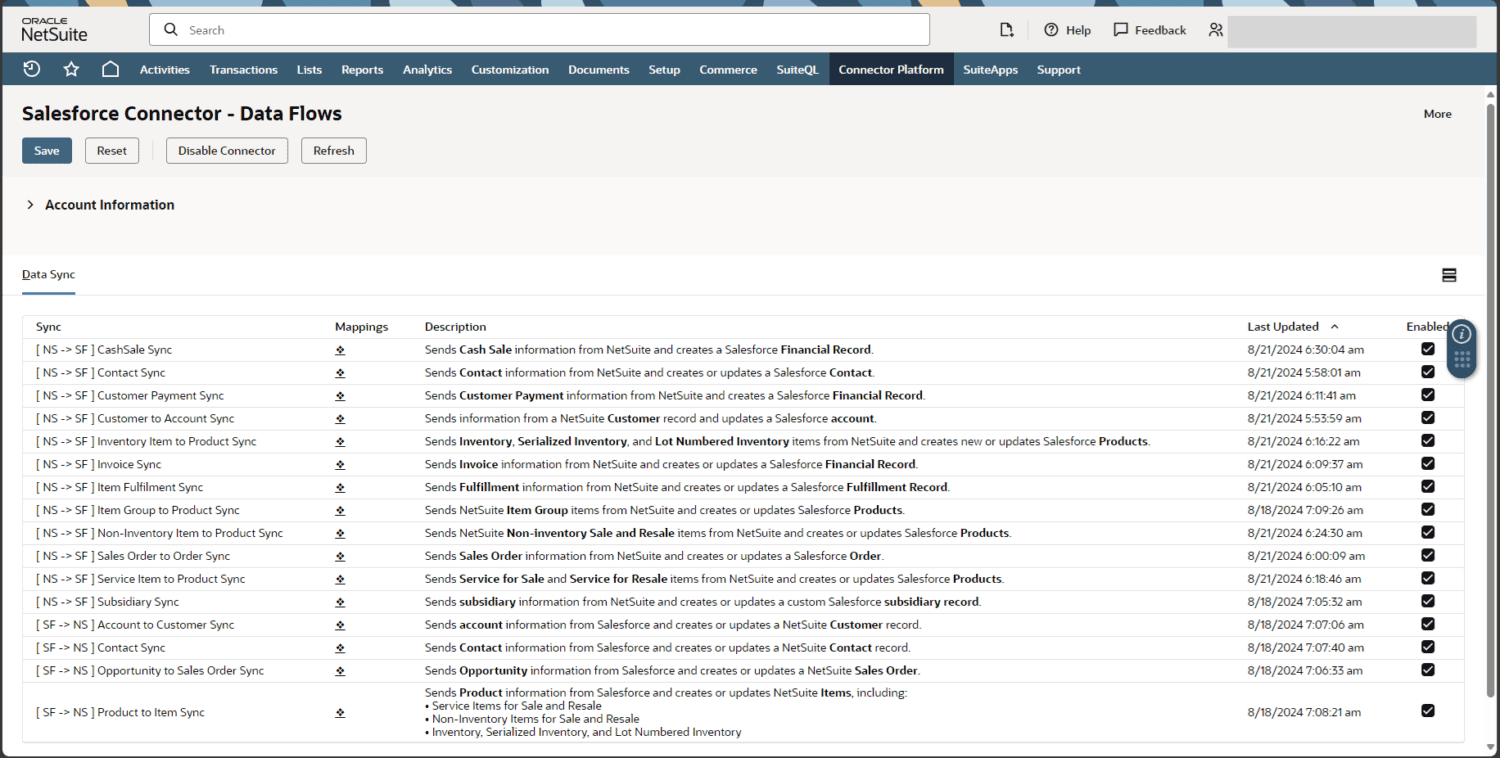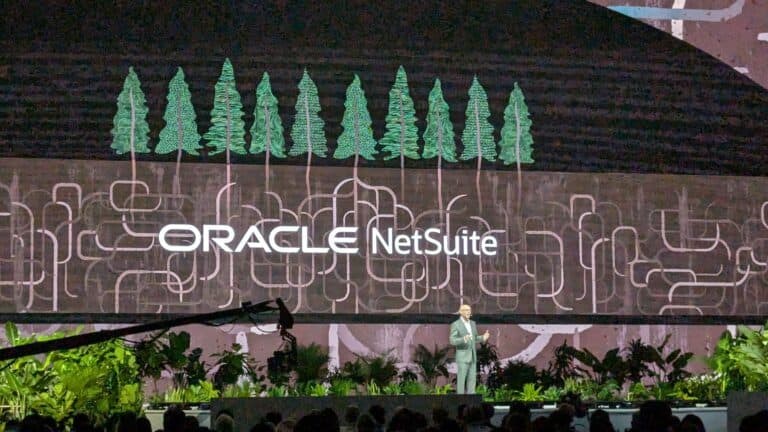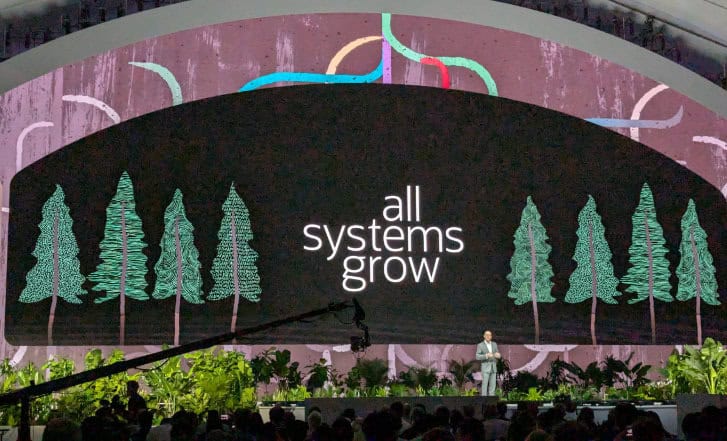At SuiteWorld 2024, the theme was “All Systems Grow”. This theme was appropriate, as there were no really big announcements. There were mostly a lot of promises being fulfilled. We also saw a major change in strategy at both Oracle and NetSuite. Competitors are now being embraced and added as partners. Oracle and NetSuite are opting for open. Perhaps that is the biggest announcement.
NetSuite is doing well. With as many as 40,000 customers, it is growing solidly in the ERP landscape. It is managing to convince more and more SMBs that it is the ERP platform for the mid-market. However, by now, it has built so many solutions around ERP that the definition of ERP falls a bit short. Sales in the last quarter were a whopping 20 percent higher than a year earlier—figures many a company will envy.
Fulfilling promises and AI announcements
There were no exciting acquisitions or major announcements at SuiteWorld 2024 this year. The main announcement was the availability of many AI features they have discussed for over a year. A total of 170 new modules and features became available, taking the platform’s quality to the next level.
In even more places, NetSuite has added AI to its solutions. It’s a combination of traditional AI (predictive AI) and generative AI. For example, predictive AI looks for anomalies in transactions and financial reports. For example, if an invoice suddenly comes from a different address or arrives at a very odd time, it will be reported. If anomalies are complicated, they can also be explained through text and graphs generated with generative AI.
NetSuite users can now use Text Enhance in even more places, such as to write an explanation of an order, or to check a process or policy document. If something has been modified in a file, Text Enhance can automatically describe it.
The updates aim to increase the quality of the NetSuite platform and the productivity of its users.
Redwood is not new, but big step forward
Oracle already presented Redwood several years ago. A new design language that all Oracle solutions will use in the future. NetSuite is set apart from Oracle’s Fusion portfolio but will also embrace the Redwood design fully. Redwood is not just a new look and color for the applications. The way users interact with the software will also be redesigned entirely.
User-friendliness is paramount, and everything must work very intuitively. The designers will look very closely at how and where buttons will be placed and how users can perform actions with as few actions as possible.
This does mean that Redwood will be rolled out in phases. It will take at least another year or maybe longer before NetSuite is completely integrated into Redwood.

So, was there nothing new at all?
Certainly there was, NetSuite SuiteProcurement allows organizations to better automate supplier orders. SuiteProcurement kicks off with two huge players that can be directly integrated with, namely Amazon Business and Staples Business Advantage. When organizations order from Amazon or Staples, the entire ordering process, invoicing, approval, and delivery will be automated. The intention, of course, is for many more vendors to start supporting SuiteProcurement, but that will take some time.
Most important news is possibly the Salesforce partnership
Perhaps the most important NetSuite announcement is the change in strategy that has been made at both Oracle and NetSuite. Instead of keeping competitors at bay, they are now bringing competitors closer.
Or as Evan Goldberg, founder and EVP of Oracle NetSuite states, “It’s up to the customer to decide what software they want to use.”
Oracle suddenly announced partnerships with Amazon Web Services, Microsoft Azure, and Google Cloud, centering on an open multi-cloud. On the NetSuite side, it chose to partner with Salesforce. It is now possible to exchange data between NetSuite and Salesforce in real-time so that customers always have the latest data.
Integration between the platforms was also possible before, but customers mainly had to facilitate it themselves. Now, NetSuite offers an automated link between the two systems. This is, quite special, considering NetSuite also offers a CRM solution within its platform. In doing so, it competes directly with Salesforce. However, Goldberg also explained they know that many NetSuite customers are also Salesforce customers. Now these customers can start using both software solutions much more effectively.
When asked if there would be more partnerships like this, Goldberg responded in the affirmative: “There are certainly more integrations to come that customers can benefit from. We do have an idea of what other software our customers use.” So, there will certainly be more SaaS applications to follow that will soon integrate out-of-the-box with NetSuite.
NetSuite FSM is better integrated, waiting for next steps
We also looked closely at last year’s acquisition in Field Service Management. This is now better integrated within NetSuite and is being rolled out to more industries. Next year, NetSuite FSM technology is expected to be built out significantly using Oracle technology. We had hoped that NetSuite was already further along in terms of extending the solution, but several conversations revealed that while development is underway, they cannot announce anything yet. No doubt, there will more news on this front next year.
NetSuite in good position to further conquer SMBs
Everything shows that NetSuite is going strong. The investments it has made in recent years are paying off. Under the wing of Oracle, NetSuite is performing well, and it does so by using the available Oracle technology.
It gratefully uses the Oracle Generative AI solution for AI. However, we understand that there is also tremendous growth for NetSuite Analytics Data Warehouse, a solution based entirely on Oracle Data Warehouse but integrated into the NetSuite platform. We learned that the growth is not so much because more customers are using it as because more employees of existing customers are finding their way to the analytics solution.
Another solution based on Oracle technology is NetSuite Enterprise Performance Management, which, according to NetSuite, is making great strides.
We also asked how quickly NetSuite can bring updates to Oracle technology-based solutions to its platform since it has to deal with different technology stacks and infrastructure. We understand that NetSuite has developed a migration path for that, where they can integrate these updates Oracle solutions into the NetSuite platform fast, allowing the platform to benefit from the latest updates almost immediately.
Lots of growth in SMBs
The numbers already showed that NetSuite is growing briskly, 20 percent year-on-year, a rate most organizations envy. We see no reason why that growth won’t continue. For SMBs, NetSuite simply has an exciting offering. Two years ago, we defined the type and size of businesses for which NetSuite is interesting and affordable. With the addition of all the AI features and the integration with Salesforce, NetSuite has now become even more attractive to many businesses.

